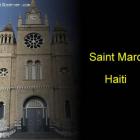Fort-Liberte In The Nord Department Of Haiti
ADVERTISEMENT
How It Got Its Name
Indians inhabited the region originally after which the Spanish colonists came. In 1578 they found the city of Bayaja and in 1605 abandoned it. In 1732 the French reoccupied it as Fort-Dauphin. In 1764, Spanish forces captured it and in 1801 shortly, after independence was declared in 1803, it was restored to the French.
After name changes in a succession, including Bayaja in 1578, Fort Dauphin in 1732, Fort St. Joseph in 1804 and Fort Royal in 1811, in 1820 it got the name Fort-Liberte, finally. The Haitian Voodoo and Roman Catholic communities inhabit here.
Sightseeing
Sightseeing opportunities at Fort-Liberte include the Royal Port at Puerto Real town and the 1731 constructed fort at Laferrière built under the directives of the King of France, Louis XV. Two hills, mangrove forests, reefs and a sandy beach can be seen between the Point Yaquezi and Fort-Liberte Bay coastline.
Perches, Ferrier and Fort-Liberte are the three municipalities of the arrondissment. Coffee is largely produced here. Charcoal is obtained from heavily exploited pine trees. Forts of the colonial era are in ruins here. It is Saint Domnigue's natural harbor. The French used it as a naval base and the bay was well guarded by four forts.
Trade and economy
Economy and trade of the region depend on agriculture encompassing pineapple, cotton, sisal, sugarcane, cocoa, logwood, honey and coffee plantations. Major water source of the town is the Marion River. Climate is nice and pleasant with cool breezes from the ocean.
Read more: town, Fort Liberte, France, Coffee, Sisal, Charcoal, Cotton, Fort, Sugarcane, Colonization, Cocoa, Nord-Est Department, Ferrier, Perches, Bayaja, Fort-Dauphin, Fort St. Joseph, Royal Port, Point Yaquezi, Fort-Liberte Bay, Naval Base, Marion River, Newsletter Articles
« The power of Radio in the Haitian Society | Main | Who is Bishop Chibly Langlois, Haiti New Cardinal? »
All Comments (1)
Leave a Reply
Name (required) E-mail (required, will not be published)
» »
Our objective is to share with you news and information about Haiti and the people of Haiti. Traditions, habits and the way we were or grew are alive in this site. We highly recommend that you Subscribe to our Newsletter and also share with us some of the things that are memorable and made us unique people.


 Haiti tech Summit
Haiti tech Summit  Marmelade, Haiti
Marmelade, Haiti  Saint Marc, Haiti
Saint Marc, Haiti  Thomonde, Haiti
Thomonde, Haiti  Maissade, Haiti
Maissade, Haiti